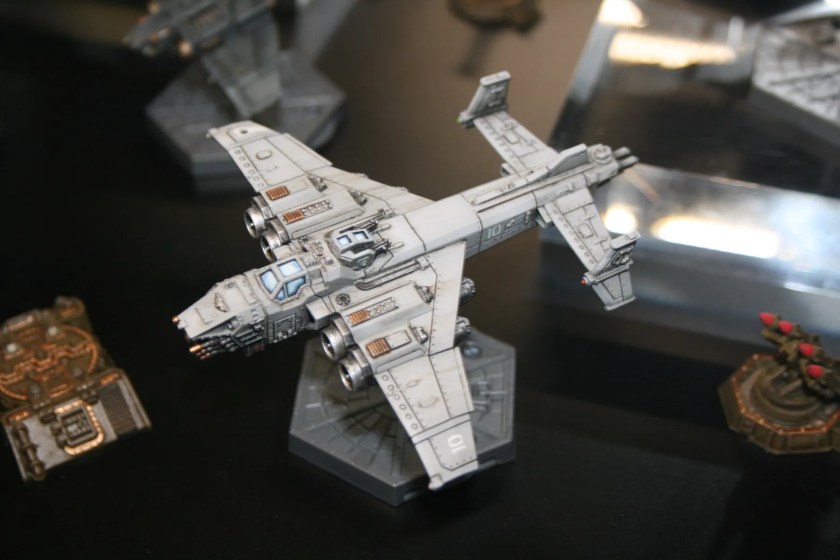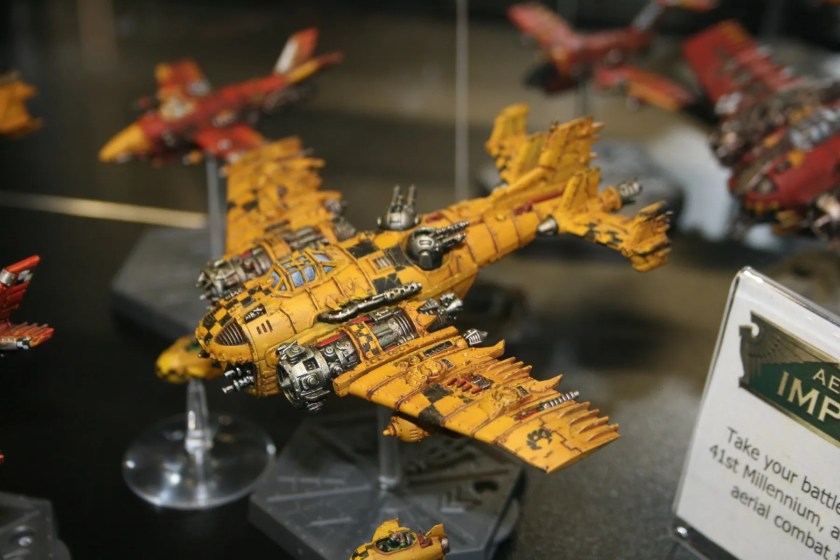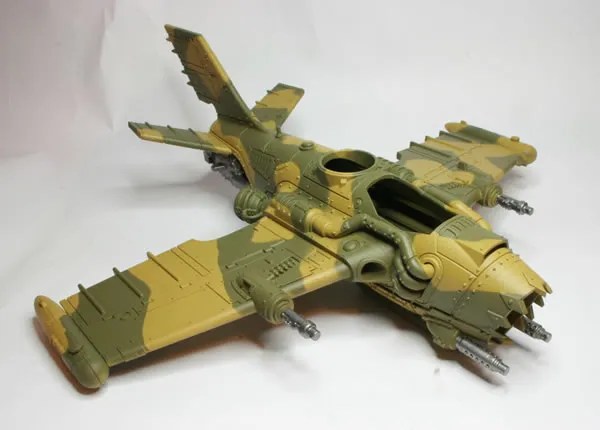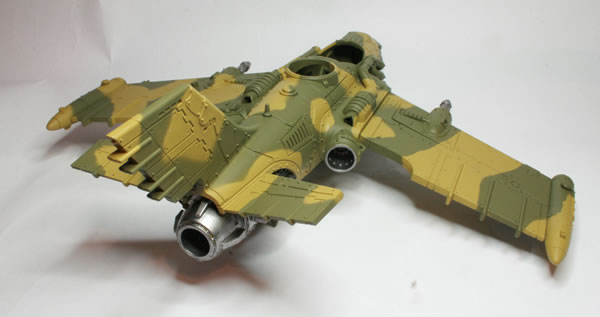Aeronautica Imperialis is a game of aerial combat set in the Warhammer 40,00 universe. While ground troops push forward to secure tactical objectives, winged squadrons push forward in the skies to decimate enemy positions and intercept enemy fighters.
At Warhammer World there are some lovely Aeronautica Imperialis models on display.

The Marauder Bomber is the workhorse of the Imperial Navy. Capable of both atmospheric and void operations, it is used as an attack craft in fleet actions as well as fulfilling a tactical role, supporting ground offensives by bombing enemy troop concentrations and support positions. Such tactical bombing missions are often launched prior to, and in support of, Imperial Guard offensives.

Sacrificing a portion of its bomb payload in favour of nose-mounted autocannon and an increased complement of Hellstrike Missiles, the Marauder Destroyer specialises in low-level assaults on ground targets.

The Thunderbolt is the mainstay weapon system of Imperial Navy fighter wings and is a rugged, well-armed and armoured heavy fighter with all-around capabilities, a good maximum speed and above-average maneuverability, powerful nose-mounted weapons and hard points located on the wings for missile or bomb load-outs. The Thunderbolt’s primary combat role is as an air superiority fighter. It seeks out and engages enemy aircraft in dogfights or hunts enemy bombers to establish air superiority.

As well as the Imperial Navy there were some great looking Air Waagh! Ork flyers as well.
Among the smallest and most numerous of Ork aircraft, the Dakkajet is built for speed and firepower, capable of unleashing devastating hails of buffets from its arsenal of quad big shootas.

The diminutive Gretchin have long been enthusiastic supporters of Ork aviation, whether gleefully pushing bombs out of open bays, crawling into tight spots to fix engines, or acting as spotters and even gunners on ork planes. It doesn’t take long before they become obsessed with flying just like their bigger kin, begging for their own turn on the control stick.
Some enterprising Ork meks decided this arrangement could be mutually beneficial, and created guided missiles that could be flown like a tiny, gretchin-sized airplane. Fitted with a short-burn rocket engine and stuffed with unstable explosives, some rabid grots are happy to climb aboard just for the (short-lived) thrill of speed and freedom. They’re loaded into the wings of specially-fitted Grot Bommers, and launched in support of the Air Waaagh!

Aeronautica Imperialis Miniatures Gallery
Aeronautica Imperialis Workbench





































